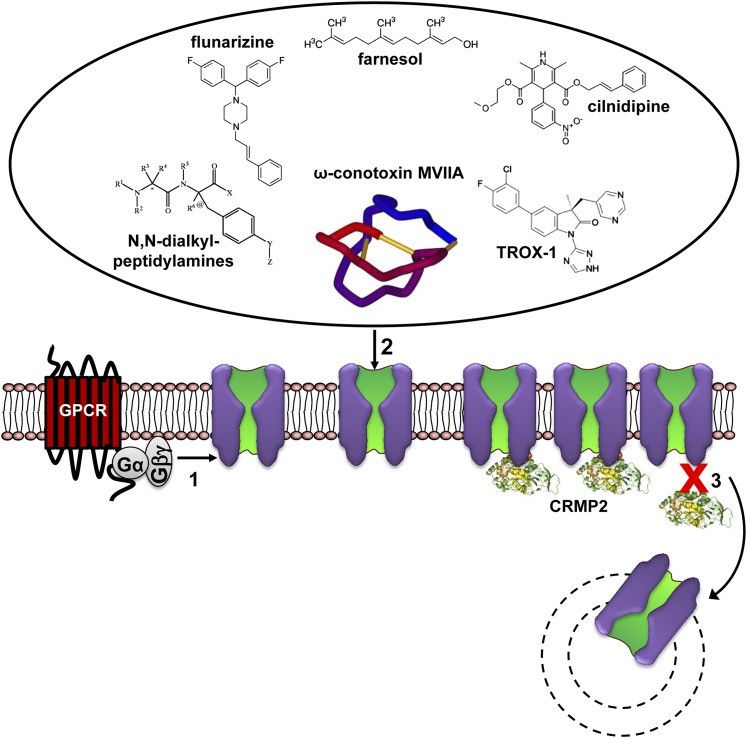Fig. 5.
Modulation of N-type channels by drugs, toxins, and signaling pathways. The major pharmacologically relevant classes of N-type calcium channel active drugs and toxins are shown in pathway 2. This includes pore-blocking peptide toxins such as ω-conotoxin MVIIA, as well as a series of different types of small organic molecules that include piperazines and piperidines, DHPs, and long-chain carbon molecules. N-type channels are modulated by a variety of different signaling pathways either through membrane-delimited actions of activated G proteins activated by GPCRs (pathway 1), or by interfering with scaffolding proteins such as CRMP-2 (pathway 3) (for details, see the text). The image of ω-conotoxin MVIIA is reproduced from Wikipedia (https://en.wikipedia.org/wiki/Ziconotide).

